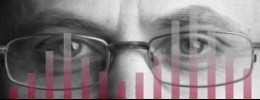
Faculty of Engineering
University of Waterloo
Pattern Recognition, Computer Vision,
Medical Imaging, Machine Intelligence

|
Contact |
 |
Hamid
R. Tizhoosh Faculty of Engineering University of Waterloo Pattern Recognition, Computer Vision, Medical Imaging, Machine Intelligence |
 |
Projects …
|
| For years, the detection of breast cancer has relied on traditional film (X-ray) mammography. X-ray mammography is currently considered the “gold standard” for breast cancer diagnosis. However, it has been proved ineffective for women with dense breasts. Moreover, it involves radiation, which makes it undesirable. Also, some patients feel discomfort and pain during the procedure. An alternative diagnostic tool to X-ray mammography would be of value. The ultimate diagnosis of all types of breast disease depends on a biopsy. A biopsy is an invasive procedure to remove and examine tissue or cells for the presence of cancer. In most cases the decision for a biopsy is based on mammography findings. Since biopsy results indicate that 80% of breast lesions detected by mammography are benign, it would be valuable to develop an alternative diagnostic tool, such as CAD ultrasound imaging, for more accurate and rapid detection and diagnosis of breast cancer. This would reduce the number of unnecessary biopsies in patients with benign disease and thus avoid patients’ physical and mental suffering, with an added bonus of reducing healthcare costs. |
|
|
Ultrasound, as an adjunct technique to mammography, can increase the overall sensitivity of conventional breast imaging. There are studies indicating that the use of ultrasound increases cancer detection rate by 14% . Ultrasound imaging of the breast is used to distinguish between solid tumours and fluid-filled cysts. Ultrasound can also be used to evaluate lumps that are hard to see on a mammogram. Recent technological advances have stimulated a revival of interest in the use of ultrasound as a major screening tool, particularly in younger women for whom the risks of radiation from mammography are most significant. Ultrasound imaging is also applicable in a limited fashion to characterize solid masses. However, it is not used as a primary screening tool because of a variable false-negative rate up to 47%, and the operator-dependent nature of efficacy. Computer-Aided Diagnostic (CAD) Tools Computer-Aided Diagnostic (CAD) tools involve the use of computers
to bring suspicious areas on a mammogram/sonograph to the radiologist’s
attention. It is used after the radiologist has done the initial
review of the mammogram/sonograph. CAD technology has the potential
to improve the accuracy of screening mammography/sonograph.
|
|
In this research, we aim to develop and determine the potential of new ultrasound computer-aided diagnostic techniques to detect and diagnose breast cancer. The proposed system should achieve high sensitivity and specificity for small breast cancers and microcalcifications. Upon its success, this system is expected to improve early detection of breast cancer, particularly in cases not suitable for mammography (such as dense breast tissue), as well as reduce the number of breast biopsies across Canada and the world. Specifically, the overall goals of the project are:
to enhance/restore the ultrasound images to reduce the effect of speckle noise in order to identify micro-structures more effectively;
to segment the suspicious structures in the ultrasound image;
to investigate how to distinguish between malignant and benign disease
using 2D target B-mode; and
|
Created
by:
Log
Web Design